Marari Beach
Marari Beach is a beach in Alappuzha District of Kerala, India. Barely 11 km from Alappuzha (Alleppey) town, this sleepy little village (also called Mararikulam), is an idyllic location for a vacation. Currently the only resort in the area is the ‘Marari Beach Resort’ belonging to CGH Earth chain of resorts, although there are a number of homestays and a new resort called Pollethai which is 1 mile south of Marari. Muthoot Leisure & Hospitality Services part of the Muthoot Group has begun construction of a 100 bedroom resort with an investment of Rs.60 Crores at Marari, this would make it the biggest resort at Marari. The resort is expected to be completed by 2011. The beach is clean and safe for swimming.
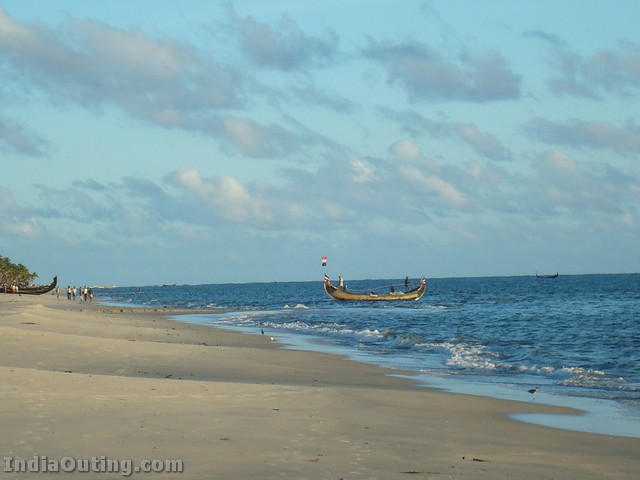
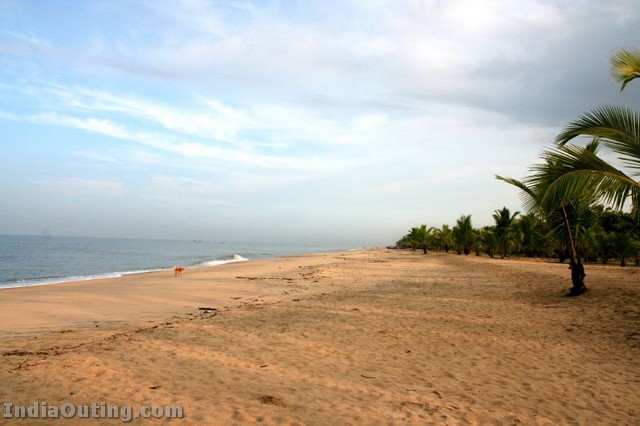
Get around
By bus
Alappuzha has an excellent local bus service system and it is cheap.
By boat
When you are visiting places like Kuttanad, it’s better to opt for boats, as many places in Kuttanad are inaccessible by road.
There are also good ferry services between places that are widely used by the locals, a cheap and scenic way of getting around.
By foot
Many of Alappuzha’s attractions are easily accessible by foot.

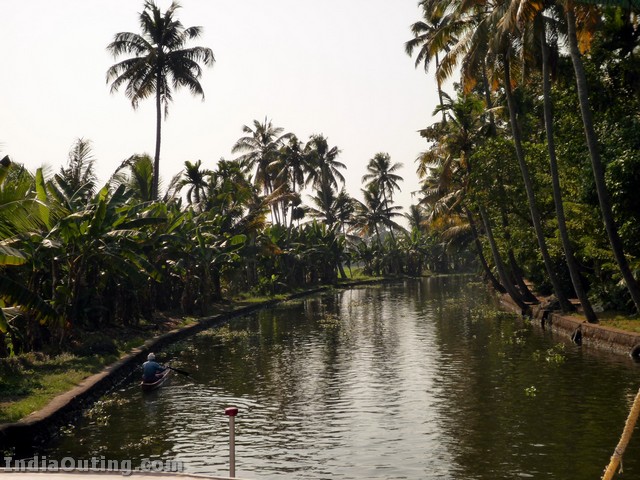
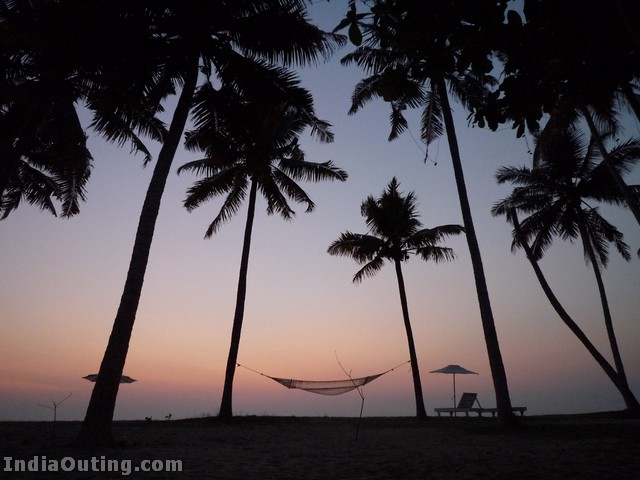
See
- Alleppey is known for its snake-boat race – the Nehru Trophy Snake Boat Race , held on the second Saturday of August. It is named after Jawaharlal Nehru, who inaugurated it in 1952. The race is very popular with the locals. Traditional snake boats, each manned by over a hundred local people compete for the Cup. Tourists could rent a houseboat and watch the race close up from those boats.
- If you are visiting Alappuzha, enquire about the schedule of temple festivals. Alappuzha is one of the few towns in Kerala where non-Hindus are generally allowed enter the temple premises. Most of the famous Kerala temples do not allow such thing, and if you are a foreigner you are immediately branded as non-Hindu and prevented from entering. Alappuzha temples are generally not that narrow-minded, though there might be a few areas inside the temples where the entry is restricted. The Ambalapuzha temple festival is particularly impressive. Five elephants carry the Krishna idol for quite a long distance with a music accompaniment. The temple is 14 kilometres away from Alappuzha. It is famous for its rose palpayasam. The temple makes this traditional very sweet milk-based dish as an offering. Because of long boiling the milk condenses turning light pink colour.
- Alleppey has a high percentage of Christians. St. Mary’s Church (Champakulam) is believed to be one of the seven churches established by St. Thomas.
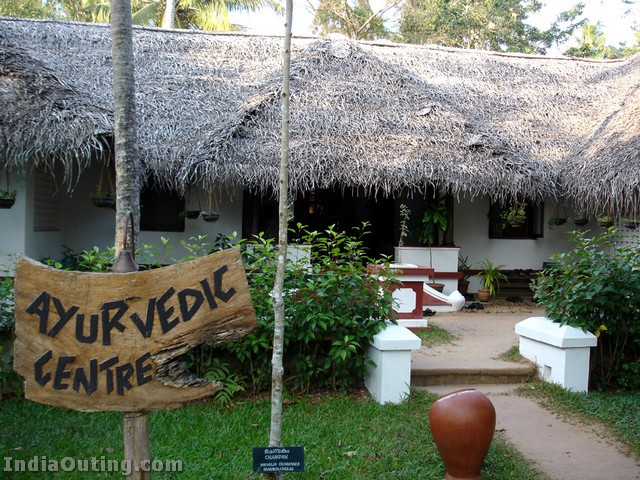

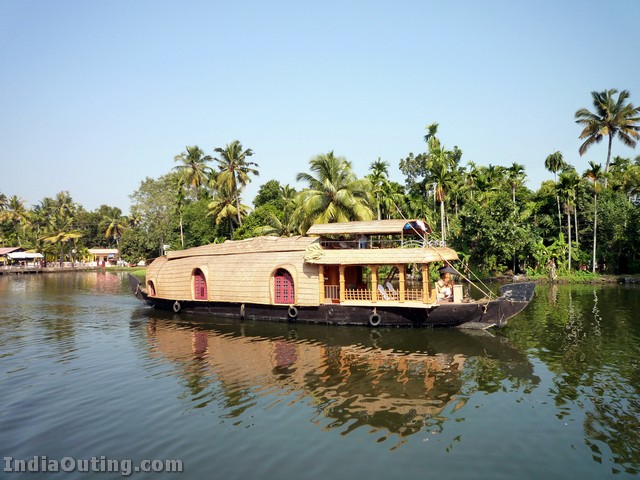
Do
- Houseboat cruises Alappuzha is inlaid with channels that support its thriving backwater tourism. Many tourists that come to Alappuzha take a houseboat cruise along the backwaters. Houseboats can be rented for 12 Hrs to few days and there is a new hop-on, hop-off service through remote backwaters in a shared-houseboat. They come equipped with well furnished bedroom, sit-outs, kitchen and modern bath and toilet facilities. Some of the house boats even sport an air-conditioner, though most people prefer a calm cruise with lanterns which add to the rustic feel. The houseboats are manned by drivers and a cook. From the boat one can observe the everyday village life of people, stop for toddy (traditional mildly alcoholic drink made from coconut sap) with grilled prawns, watch birds, and relax in the middle of the lake. It is nice to go towards Kuttanad, the rice bowl of Kerala, where rice farming is done below sea level.
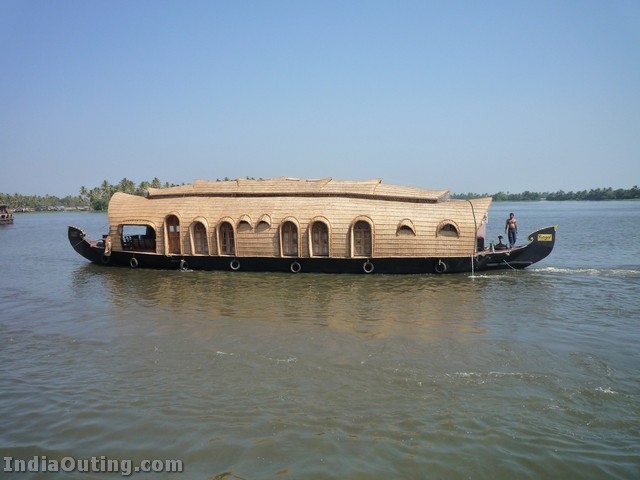
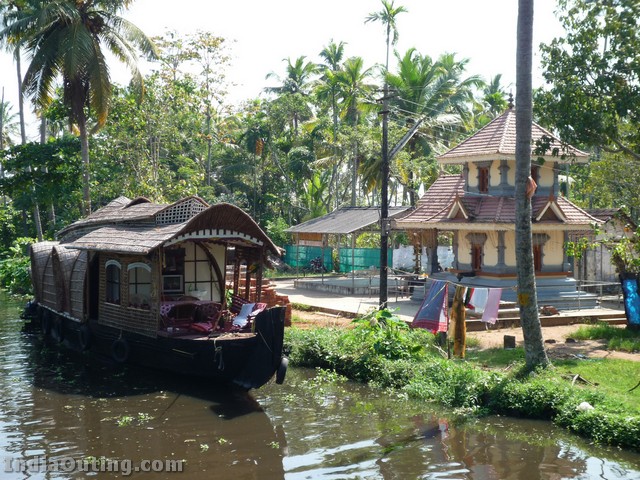

Edakkal Caves
Edakkal Caves are two natural caves located 1000 metres high on Ambukutty Mala 25 km from Kalpetta in the Wayanad district of Kerala in India’s Western Ghats. They lie on an ancient trade route connecting the high mountains of Mysore to the Malabar coast ports. Inside the caves are pictorical writings believed to be from neolithic man, evidence of the presence of a prehistoric civilisation existing in this region. Such stone age carvings are very rare and these are the only known examples in southern India.
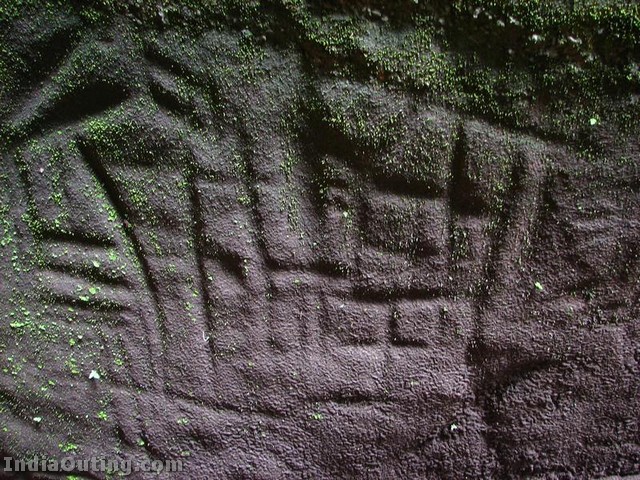
Petroglyphs
These are not technically caves but rather a cleft or rift approximately 96 feet by 22 feet, a 30 foot deep fissure caused by a piece of rock splitting away from the main body. On one side of the cleft a rock weighing several tons has fallen over the fissure forming a roof. The carvings are of human and animal figures, as well as of tools used by humans and symbols, suggesting they were created by a highly civilised prehistoric people.
The petroglyphs inside the cave are of at least three distinct types. The oldest may date back over 8000 years ago. Evidence indicates that the Edakkal caves had been inhabited at several different times in history.
The caves were accidentally discovered by Fred Fawcett in 1890 who immediately understood their anthropological and historical importance. He subsequently wrote an article about them, attracting the attention of scholars.
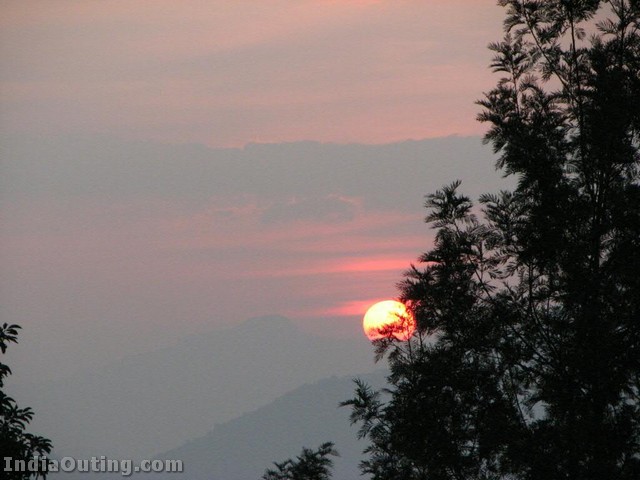
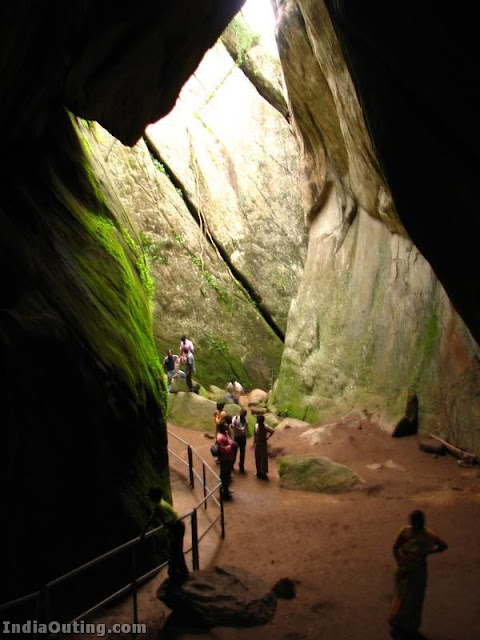

Tourism Information
- Approximate time required to climb till top of the hill and down: 3-4 hours.
- Entry to the hill closes by 4 PM.
- Departmental Jeeps can be hired to travel initial few km till the foot of the hill..
- Other nearby places- Soojippara water falls, Sultan Bather, Matunga Wildlife Sanctuary.
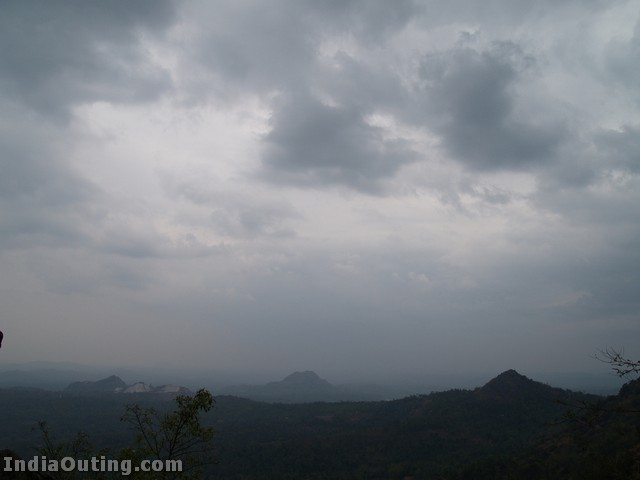
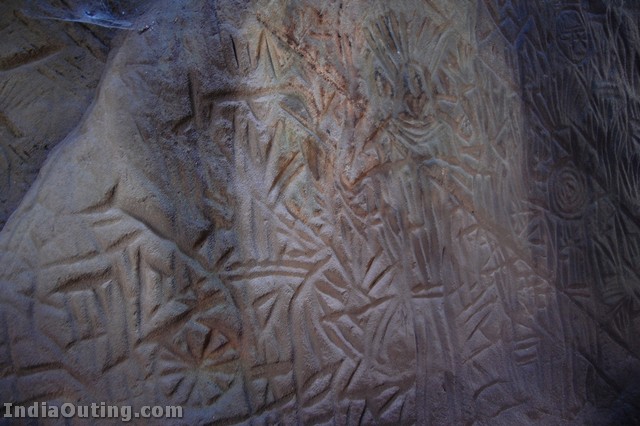
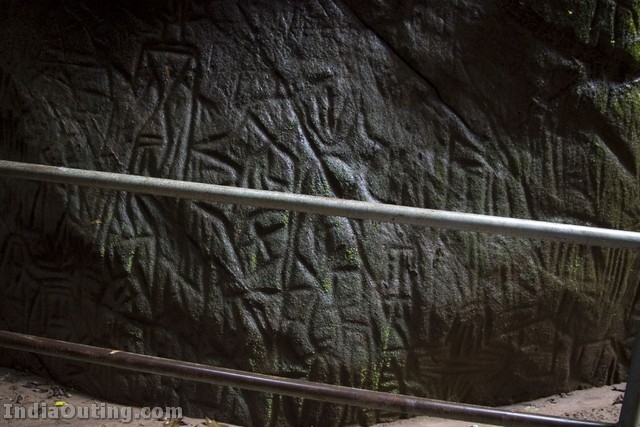
Get around
- Bus – Plenty of local bus services are available for transportation between the townships. But if you want to go to some tourist places you have to rely on a taxi.
- Autorickshaw – Autorickshaws are cheaper compared to taxis and can be used to reach the interior places from the townships.
- Taxi – Local taxis are also available at cheap rates (In Wayanad, the term Taxi is mostly in reference with Jeep).
- Car – You can hire a car from most of the townships if you want to travel effortlessly.
- Walk – Many places of attractions are nearby the towns so you could walk between them.

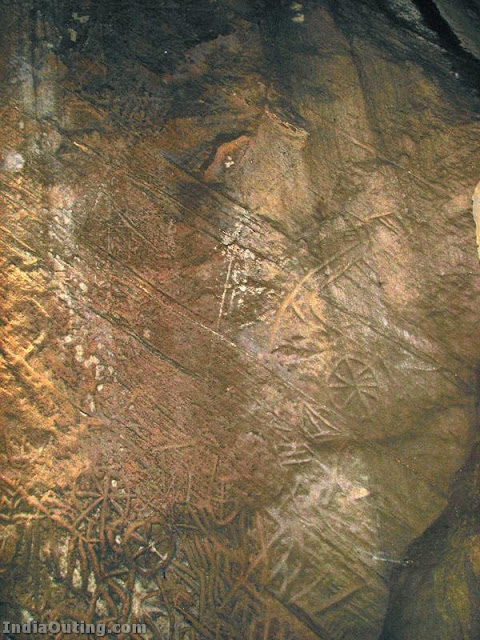

Kovalam – Beach Town on the Arabian Sea


Get in
Kovalam is about 16 km (20 minutes in a taxi) from Trivandrum. Taxis can charge around 400-500 rupees to get to Kovalam. When asked where you want to go, say Hawa Beach, Leela Beach/Main Beach or Lighthouse Beach in Kovalam.
In an auto-rickshaw 250-300 rupees is a fair price, avoid going above 300 rupees. If in doubt ask to use the meter, but in reality they really don’t work at all. Advice being if they are trying to rip you off go to leave for another rickshaw and they will often back down and offer you a fair price, if not, get in a different rickshaw. Even if India is a cheap country, the prices for gasoline are international standard, so don’t expect super cheap private transportation. If you go by public bus from Trivandrum-East Fort to Kovalam Beach you only pay 8 Rps. for the half hour trip.
Buses to Trivandrum can also be caught from Kovalum Junction as well as Amabassador taxis and Autos to pretty much anywhere. Be very careful walking around the junction, especially at night, as there are no traffic lights (what’s new?!) and the street lighting is very minimal. The intersection can be busy.
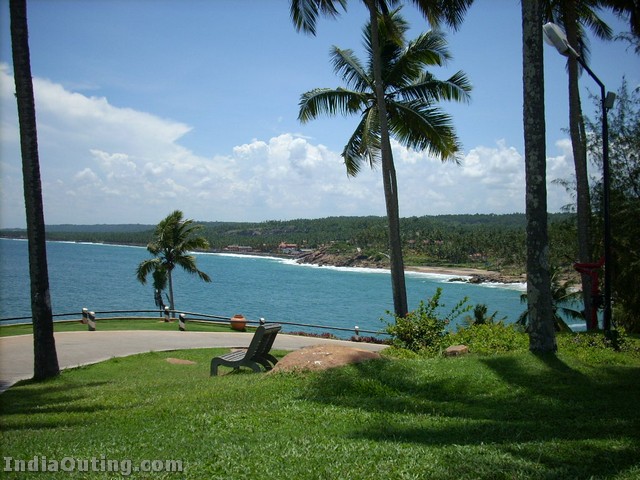

Get around
Tourist taxis are the most convenient way to travel around attractions, especially while travelling in a group. Most airports and railway stations have tourist taxi services that would take you anywhere you would want to go.
A more adventurous option is to get a bike on hire. The highway is a pleasure to drive on, with the cool breeze and coconut palms lined along the way. Once on the highway, drive north for the plains, drive south for the hills. Avoid driving through Thiruvananthapuram city, it’s congested. The old highway, also called MC road, is also good to drive on. The MC road can take you deep into the hills. Try out the throaty Enfield 350 CC bikes for a truly vintage experience, check your fuel levels before you leave.
Two wheelers do not have to pay the highway toll, simply ride through the side lane.
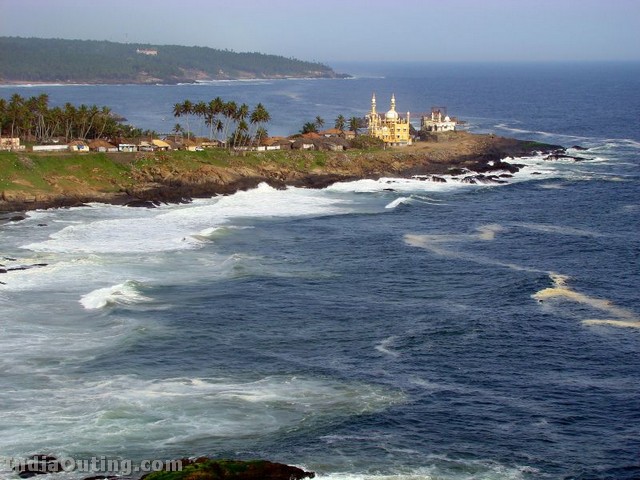

See
- Varkala Drive north on the highway for about an hour (55 km). It has a superb beach and cliff front and the usual tourist amenities. The quiet sandy beaches and large lakes of Paravur (65 km from Kovalam) are also close to Varkala and are hidden away. Paravur is a shared secret among those seeking a more peaceful getaway.
- Ponmudi – A nice semi-hill station located about 1 1/2 hours from Kovalam.
- Neyyar Dam ca 1,5 hours by local bus. Only worth to visit if you do not know what else to do. It is a water reservoir. No other curiosities except some crocodiles kept in cages. Better spend the time on the beach.
- Backwater Tours between Kovalam and Trivandrum there are backwater trips available that can be booked at Kovalam Beach itself. Small boats for 4-6 persons. A nice experience.
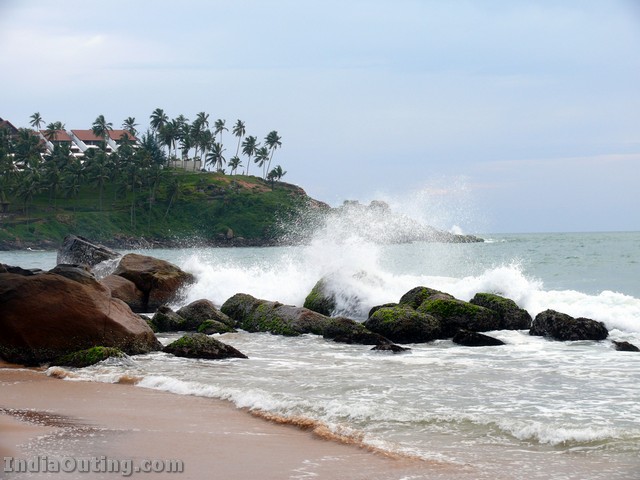
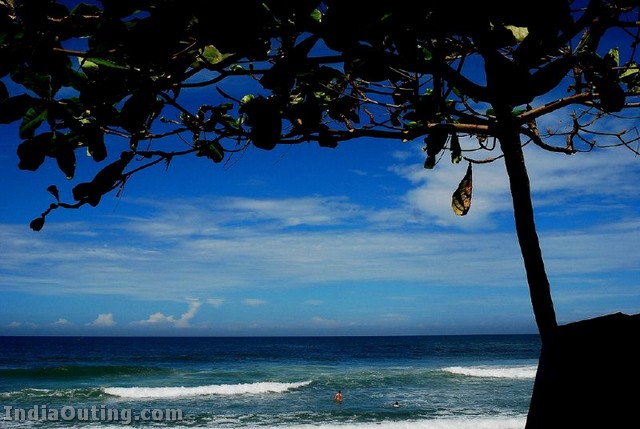
Do
- Surfing – Some fine waves from time to time (0.5 – 2 meters). You can hire surf boards and body boards on the beach from $6USD a day. Body boarding can be enjoyed by anyone. Surfing takes a bit more skill. It is wise to follow the life-guards’ instructions as there are some strong currents that can suddenly whisk the unwary out to sea.
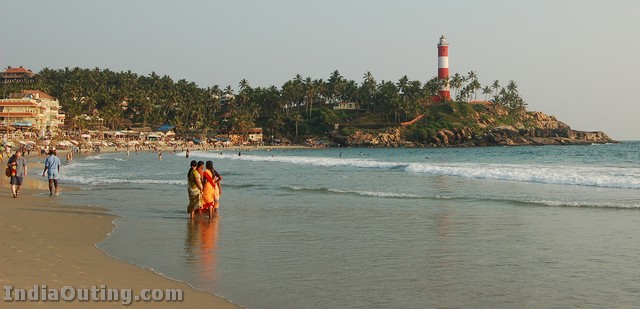
Cochin
Kochi (Malayalam: കൊച്ചി), formerly known as Cochin, is a city in the Indian state of Kerala. The city is one of the principal seaports of the country and is located in the district of Ernakulam, about 220 kilometres (137 mi) north of the state capital, Thiruvananthapuram. It has an estimated population of 600,000, with an extended metropolitan population of about 1.5 million, making it the largest urban agglomeration and the second largest city in Kerala after the capital.
Since 1102 CE, Kochi was the seat of the Kingdom of Cochin, a princely state which traces its lineage to the Kulasekhara empire. Heralded as the Queen of the Arabian Sea, Kochi was an important spice trading centre on the Arabian Sea coast from the 14th century onwards. Ancient travellers and tradesmen referred to Kochi in their writings, variously alluding to it as Cocym, Cochym, Cochin, and Cochi. Occupied by the Portuguese in 1503, Kochi was the site of the first European colonial settlement in India. It remained the capital of Portuguese India until 1530, when Goa became the capital. The city was later occupied by the Dutch, the Mysore and the British. Kochi was the first princely state to willingly join the Indian Union, when India gained independence in 1947.
A growing centre of information technology, tourism and international trade, Kochi is the commercial hub of Kerala, and one of the fastest growing second-tier metros in India. Successive waves of migration over the course of several millennia have made Kochi a cultural melting pot. Despite the risk of overdevelopment, the city retains its distinct colonial heritage and a blend of tradition and modernity.

History
Kochi was the centre of Indian spice trade for many centuries, and was known to the Yavanas (Greeks) as well as Romans, Jews, Arabs, and Chinese since ancient times. Kochi rose to significance as a trading centre after the port at Kodungallur (Cranganore) was destroyed by massive flooding of the river Periyar in 1341. The earliest documented references to Kochi occur in books written by Chinese voyager Ma Huan during his visit to Kochi in the 15th century as part of Admiral Zheng He’s treasure fleet. There are also references to Kochi in accounts written by Italian traveller Niccolò Da Conti, who visited Kochi in 1440.
The Kingdom of Kochi came into existence in 1102, after the fall of the Kulasekhara empire. The King of Kochi had authority over the region encompassing the present city of Kochi and adjoining areas. The reign was hereditary, and the family that ruled over Kochi was known as the Cochin Royal Family (Perumpadappu Swaroopam in the local vernacular). The mainland Kochi remained the capital of the princely state since the 18th century. However, during much of this time, the kingdom was under foreign rule, and the King often only had titular privileges.
Kochi witnessed economic stagnation in the years following India’s independence. The city’s economic recovery gathered momentum after economic reforms in India introduced by the central government in the mid-1990s. Since 2000, the service sector has revitalised the city’s stagnant economy. The establishment of several industrial parks based on Information technology (IT) and other port based infrastructure triggered a construction and realty boom in the city. Over the years, Kochi has witnessed rapid commercialisation, and has today grown into the commercial capital of Kerala.
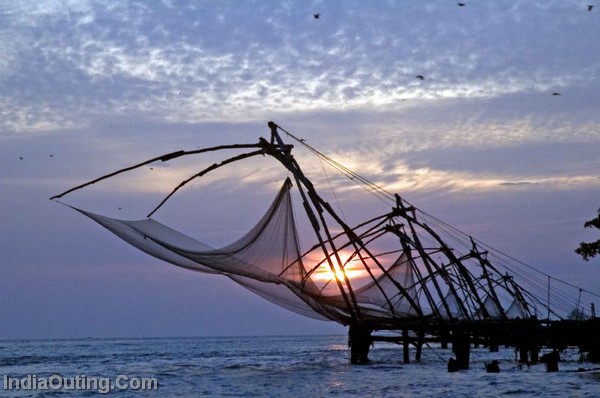
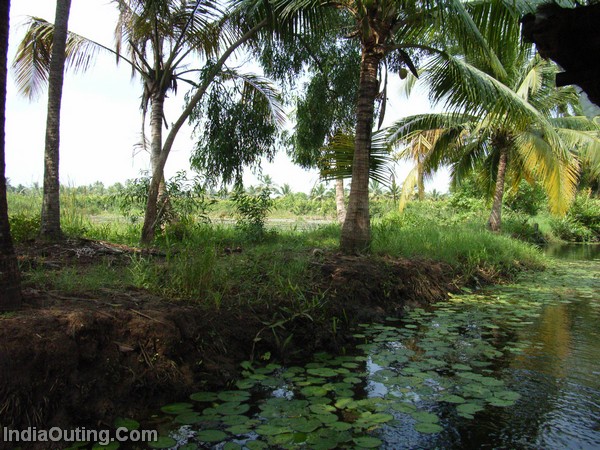
Climate
Kochi’s proximity to the equator along with its coastal location results in little seasonal temperature variation, with moderate to high levels of humidity. Annual temperatures range between 20 to 35 °C (68–95 °F) with the record high being 34 °C (96 °F), and record low 17 °C (63 °F). From June through September, the south-west monsoon brings in heavy rains as Kochi lies on the windward side of the Western Ghats. From October to December, Kochi receives light rain from the northwest monsoon, as it lies on the leeward side. Average annual rainfall is 274cms (108 in), with an annual average of 132 rainy days.
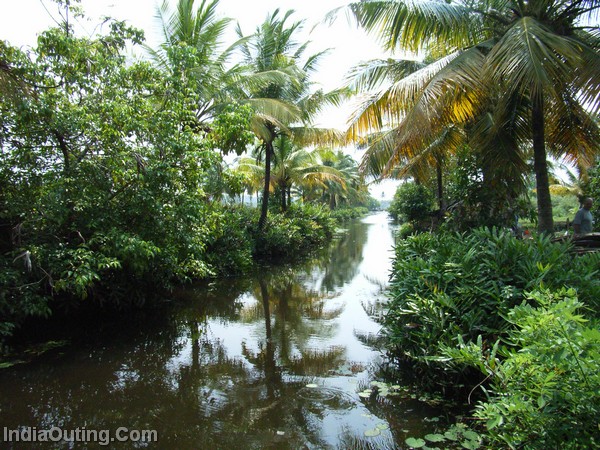

Get in
By plane:
- Cochin International Airport
is located in Nedumbassery approximately 29 km from the city. There are flights to and from Colombo, Dubai, Abu Dhabi, Singapore, Sharjah, Jeddah, Muscat, Kuwait, Thiruvananthapuram, Mumbai, Chennai, Delhi, Hyderabad and Bangalore. Take a pre-paid taxi to your destination.
- Trivandrum International Airport, which is around 220 km from Kochi, and travel to Kochi by road/rail. It is 4-5 hour journey.
By train : You can reach Cochin from other cities Thiruvananthapuram (Trivandrum), Coimbatore, Kozhikode (Calicut), Chennai, Bangalore, Bombay, New Delhi, Hyderabad, Kolkata by train.
There are two major Rail station in Cochin( Ernakulam Town and Ernakulam Junction, locally known as North and South railway stations). The Indian Railways [3] serves Cochin with a number of train services connecting it to other parts of the state and the country. One of the best ways to get to Cochin is to take the Konkan Railway train from Mumbai that passes through the Konkan coast. The train ride is renowned for the breathtaking scenery and the natural beauty of the terrain that the train passes through.
By bus : Cochin (Kochi) is accessible from all parts of the state of Kerala, through the extensive state run Kerala Road Transport Corporation (K.S.R.T.C.) bus service. These buses are generally cheap and reliable, but the drivers are notoriously reckless, although they have excellent control over their vehicles. There buses are classified as Ordinary Passenger, Limited Stop, Fast Passenger, Super Fast Passenger, Lightning Express and Garuda. The last is an air-conditioned service operating on the Thiruvananthapuram-Coimbatore and Thiruvananthapuram-Calicut routes, both passing through Kochi. These are modern buses and compare with buses in Europe, with well-maintained interiors and comfortable seats.
There are also numerous private buses or ‘route buses’ that connect pretty much every single district in Kerala to Cochin. Both the K.S.R.T.C and the private buses offer very basic comforts and are rarely air conditioned.
There also exists daily services to and from other major cities in South India including Mumbai, Bangalore(12 hrs), Mangalore (12 hrs), Coimbatore (4.5 hrs) and Chennai (14 hrs). These are run by both private operators and by the respective State Transport Authorities. The private buses offer better comfort, are cleaner and more modern, and are more expensive. A ticket on a private operator-run bus, especially an A/C Volvo bus, is costlier than a 3-AC train ticket.
By taxi :Trivandrum to Kochi around 220 km
By boat : Cochin can be reached by sea in yachts or by occasional cruise ship from Goa or Bombay.

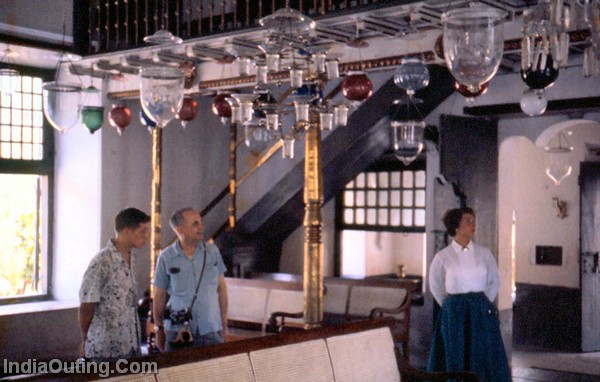
See
- Hill Palace Museum – The erstwhile Cochin Raja’s palace, now converted to a museum along with a small zoo, is 12 Km south-east of Ernakulam at Tripunithura. Has paintings and epigraphy from the collections of the Travancore & Cochin royal families.
- Museum of Kerala History – at Edappally, 10km. north of the city
- Pareekshith Thampuran Museum contains oil paintings, old coins, sculptures and Mughal paintings, and models of interesting temples and traditional Kerala buildings.
- Fort Kochi
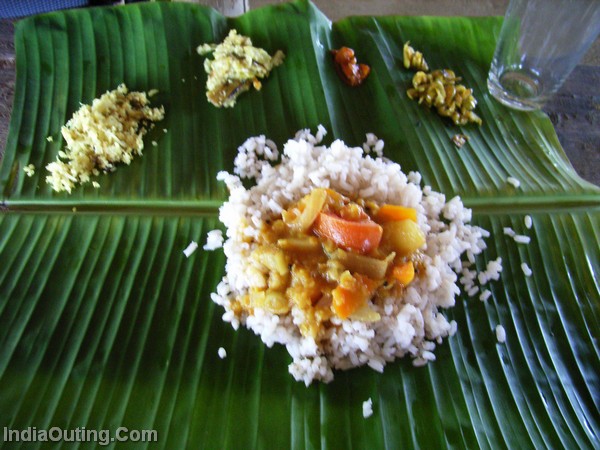
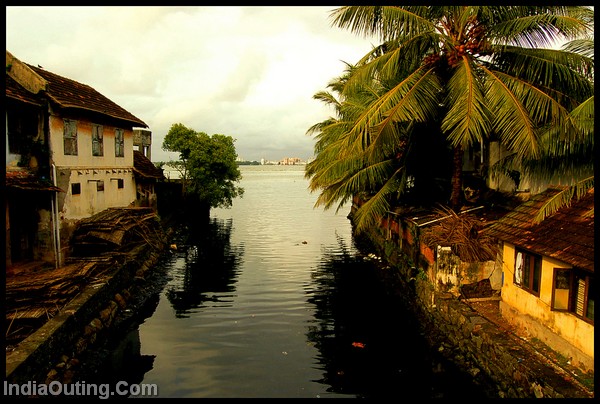
- Mattancherry There is a beautiful Jain temple here. It is great to visit at about 12:15hrs when the pigeons are feed by Jain mandir people, which they have been doing for the past 17 years. A huge number of pigeons first take three circles of the temple and listen to mantra before eating.
- Willingdon Island – An large artificial island made out of sand dredged from the backwaters to deepen the Kochi Port.
- Vypeen and Gundu Islands – The Island boasts a lighthouse at Ochenthuruthu, beaches and the early 16th century
- Bolgatty – built in 1744 as Dutch Palace; one of the KTDC Hotels with green lawns and Golf Course.
- Chinese fishing Nets – at Fort Kochi.
- Dutch Palace – constructed by the Portuguese in 1568 for Maharaja of Kochi Veera Kerala Varma. Later rebuilt by the Dutch.
- St. Francis Church, Fort Kochi – constructed by the Portuguese[1503]. Vasco da Gama was buried here [1524] and later his remains were transferred to Lisbon, Portugal. His tombstone can be seen inside the church.

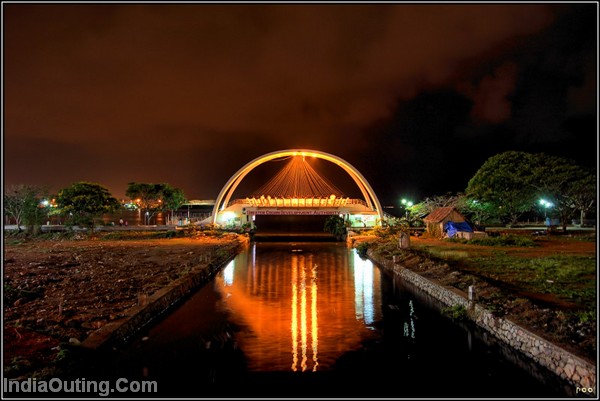
- Jew Street and Synagogue – at Mattancherry, the synagogue was constructed in 1568 and rebuilt in 1662.
- Santacruz Cathedral- at Fort Kochi
- Art Complex – Madhavan Nayar Foundation – Gallery of Paintings and Sculptures at Edappally, 10 km. north of city. (There is the Kerala History Museum, history students take note!)
- Thirumala Devaswom Temple – at Mattancherry. A temple built by the Gowda Sarawatha Brahmins, Lord Venkateswara the main deity, famous for second-largest brass bell in Asia. The North Gopuram is fully roofed with copper.
- Ernakulam Siva Temple – situated at the centre of the town, near the Durbar Hall Ground.
- Durbar Hall Ground – venue of many fairs during festivals
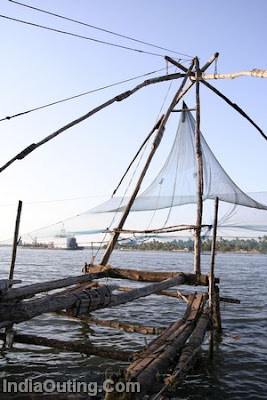
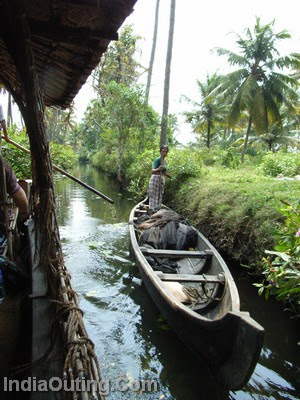
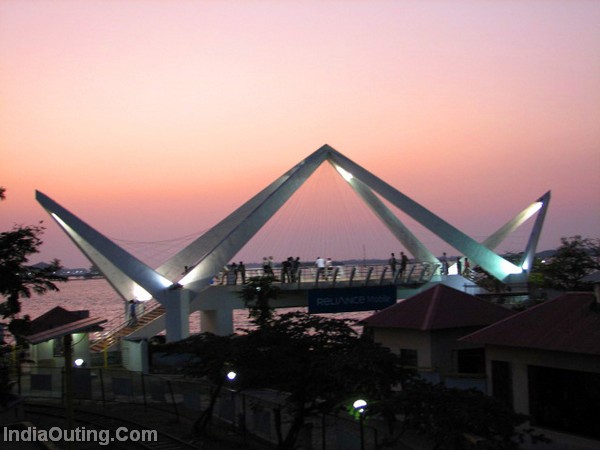
- Kalady – Birth place of Sri Shankaracharya (Adi Shankara) [786-820], the great Indian philosopher and founder of the Advaita philosophy. Shrines of Shankaracharya here are open to all pilgrims, irrespective of religion or caste. 48km north of the city.
- Kanjiramattam Mosque – Muslim pilgrim center, venue of Kudikkuthu Festival, 30km east of the city
- Chendamangalam – Historically the seat of Paliath Achan, the Prime Minister of Kochi Kingdom, old Oriental Jewish synagogue and colony. Now a centre for handloom weaving and coir manufacturing, view of annual fair “Mattachanda” (Barter Systems). It is 42km north-west of city near North Paravur .
- Pallipuram Fort – built by the Portuguese in 1503, one of the oldest existing European monuments in India. Situated in Vypeen island at Pallipuram.
- Aluva – called “Alwaye” till a few years ago, town on the way from the international airport to Kochi, has some places of interest – Sree Narayana Guru’s Advaita Ashram and the erstwhile Travancore king’s palace.
- Aluva Manalpuram – is famous for the Shivarathri festival on the sandy banks of the Periyar river.
- Malayattoor Mount – A Christian pilgrimage centre, supposed to be a place visited by St. Thomas. (St. Thomas visited Kerala in AD 52. Don’t forget Christianity reached India much before it reached Europe!)
- Cherai Beach – near North Paravur is a new-generation tourist hot-spot with golden beaches (with big sand grains, like those of river sand used in construction, probably deposited by the Periyar river at some point in time), coconut palm corridors, backwaters, and historical monuments. You can reach Cherai Beach by bus, auto rickshaw, etc., from Ernakulam town though bus is a lot cheaper. Frequent buses are available from High Court that go through Goshree bridges and Vypeen Island.
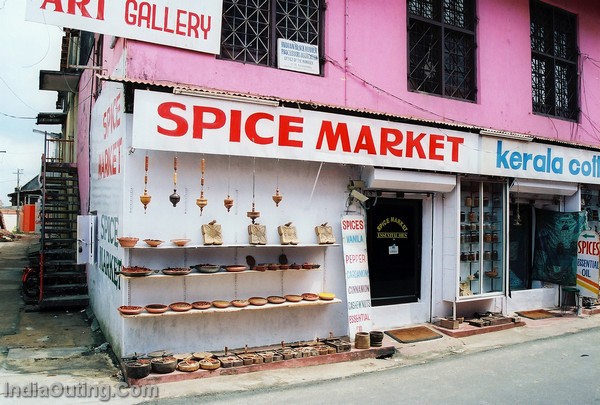
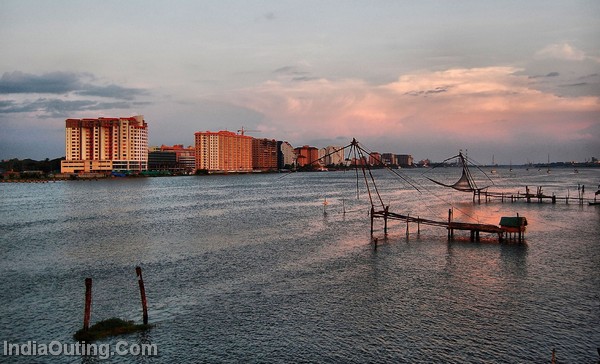
Munnar
Munnar (Malayalam: മൂന്നാര്, Tamil: மூணார்) is a town located in Kerala state in the southern Western Ghats in South India. Munnar was a summer resort of British government in South India. It is 1600 m (5400 ft) above sea level. It is pronounced “Moon-aar” meaning “Three rivers” in Tamil and Malayalam. There are in fact three rivers – Madupetti, Nallathanni and Periavaru which flow through this town, but join some distance away from Munnar.
The neelakurinji, a blue flower which blooms only every twelve years, is found in this region. It bloomed last in December 2006. Munnar also has the highest peak in South India, Anamudi, at 2695 m.
The tea plantations and holiday facilities make this a popular hill station in Kerala.
Altitude : 1600 Mts to 1800 Mts above sea level. Temperature : Min. 0c – Max. 25c. Clothing : Warm Clothes and Rain Gear. Tourist Season : August to March

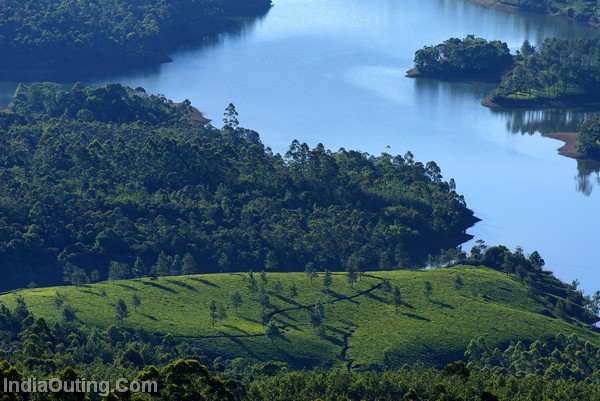


History
The entire area of Munnar , nearly about 556.44 square kilometer of land really belonged, and still belongs to the royal family of Poonjar and was given on lease for 99 years by the then poonjar King Kerala Varma in 1887.During the British rule of India, Munnar was developed to cultivate tea plants. At that time, most of the people around the area were employed as laborers for plantations throughout the area. In the early stages of development, only Tamilians and a small number of Malayalis inhabited Munnar. From the late 1890s till 1921, tea was transported down from Top Station by 24 inch railway and ropeway to Munnar for transhipment throughout the World.
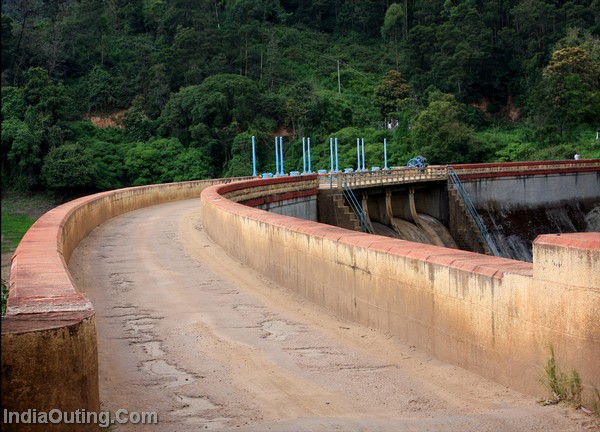
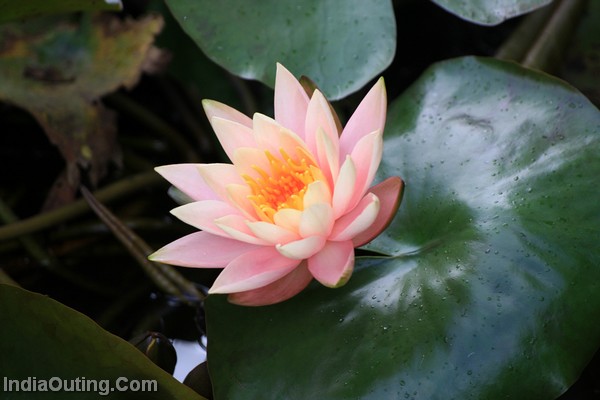
Climate
The region in and around Munnar varies in height from 1,600 meters (5,249 ft) to 1,800 meters (5,906 ft) above mean sea level. Munnar enjoys a salubrious climate. The weather ranges between −5 ℃ (23 ℉) and 10 ℃ (50 ℉) in winter and 15 ℃ (59 ℉) and 25 ℃ (77 ℉) in summer. The tourist season is from August to May. However, even the monsoons are lovely with many streams and rivulets in the area. See:map
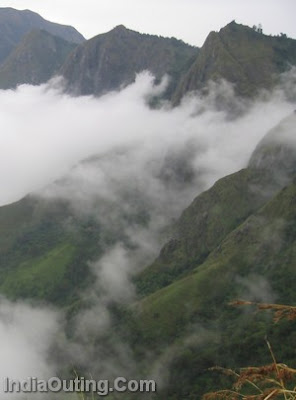
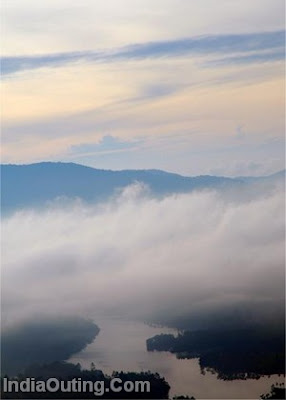

Get in
Munnar is 140 km (about 4.5 hours) from Kochi. Remember to budget a good 6 hours if you are driving up or down, since the road is blind in some places and there are a lot of trucks and buses that seem to drive as if they own the road. Although, the road is smooth (NH 49), it is narrow, twisty and curvy. Make sure you have a lite meal before you drive to Munnar on these roads, otherwise the next thing you will see on your dash board will be your last meal! Kothamangalam is on the way and is 80 km away from Munnar. Between Kothamangalam and next town “Adimali”, you can experience a beautiful cool drive through a natural forest. Alongside, you can see many refreshing waterfalls.
Once you reach Adimali, Munnar is just 30 kilometers away – but, it will take almost an hour to reach. Around 22 kilometers from Adimali, you can start seeing the tea plantations on both sides of the road and a panoramic view of the western ghats. The view is extremely beautiful during the early mornings.
Munnar can also be reached from Kodai Road, Madurai, Udumalpet. The drive to Munnar involves about 3 hours on the ghat section. There are 17 hair pin bends and traversing them can make you feel nauseated. However if you eat light while travelling you can enjoy the scenery during the drive.
Munnar is about 150 km from Coimbatore. Coimbatore-Munnar route is a very scenic route and though a bit longer is generally considered worth the extra time spent.
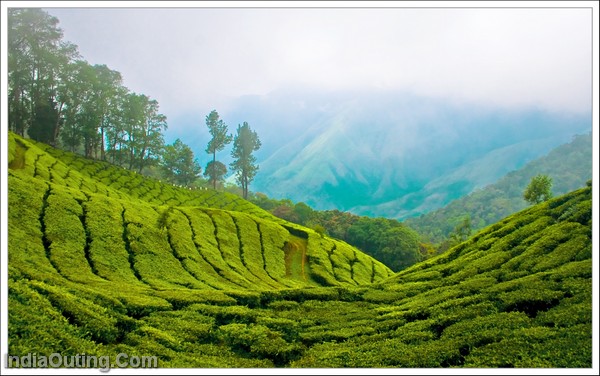
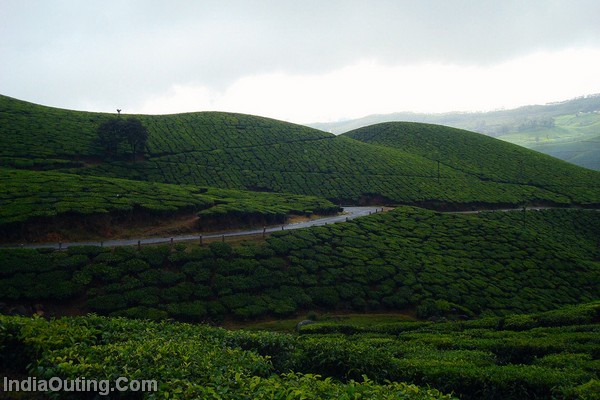
See
- Eravikulam (Rajamalai) National Park: 45 mins from Munnar. See Nilgiri Thar (Hemitragas hylocres) – an endangered species of mountain goats, rolling grasslands and sholas, spread over 97 sq km in the Rajamalai hills, rare flora and fauna, Atlas moth (largest in the world), lion-tailed macaque, leopards, tigers, The Kurichi or Neelakurinji Flowers turn the hills of Rajamalai blue every 12 years. The next bloom will be in 2018. One can actually debate if going to the high peak just to see some goats is worth all the effort or not. However, the walk along the park is very romantic and has some breath taking view.
- Anamudi Peak inside Eravikulam National Park: The highest peak (2695 m) south of the Himalayas, towers over the sanctuary in majestic pride. The slopes of the hills abound in all kinds of rare flora and fauna. The Atlas moth, the largest of its kind in the world, is a unique inhabitant of the park. Other rare species of fauna found here are the Nilgiri Langur, the lion-tailed macaque, leopards, tigers, etc. An ideal place for trekking, facilities are provided here and tourists are allowed to go on foot up to Anamudi.
- Chinnar Wildlife Sanctuary.
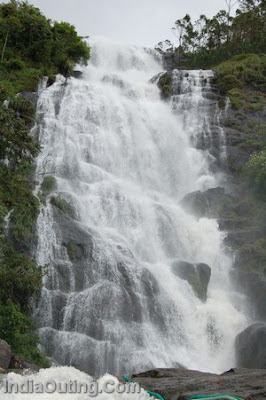
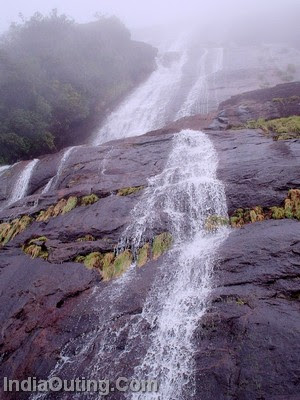
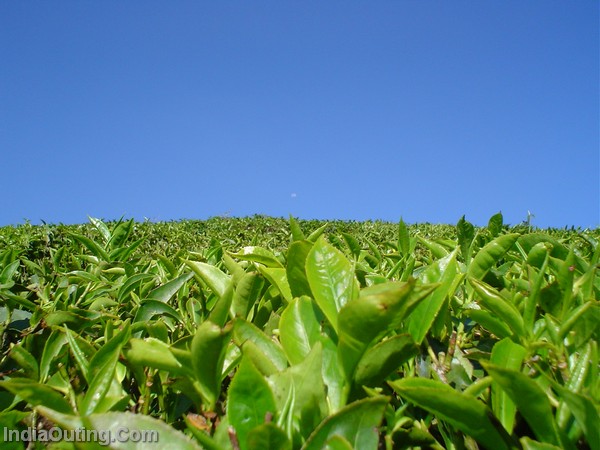
- Mattupetti Dam – 10km from Munnar, this popular picnic spot activities like boating and horse riding and is a great place to spend the day especially if visiting with children. You could take the speed boat ride which is fantastic. It costs 300 INR if you have to hire a boat for you alone. The ride is for 15 minutes. The maximum capacity is 5 persons and you could save some money if you are a group of 4 to 5.
- Mattupetti Indo-Swiss Farm – Better known as Mattupetti (cattle village), Tamil migrant labourers had once upon a time reared cattle here. The cool climate and abundance of fodder made it the ideal location for the Indo-Swiss dairy farm. Established in 1961, the Kerala Livestock Development Board (KLDB) manages this highly specialised dairy farm. The dairy farm is a unique one of its kind with more than 100 varieties of high-yielding cattle being reared.
- Echo Point – 15km from Munnar, on the way to top station from Munnar is a small lake set amidst rolling hills. Every loud call made from a spot on the lake embankment is returned manifold by the echo from the surrounding hills. Young tourists throng to this place to listen to the echoes of their friendship calls.
- Top Station 37km from Munnar on the Kerala and Tamil Nadu border, has great views of the Western Ghats. Top station is the “top”-tourist attraction. This place gives a real ‘above the clouds’ experience. Regular buses go to Top Station (1 hr) from Munnar. A jeep costs Rs 400. The area is known for the Neelakurunji plant, which flowers only once every twelve years. The flower is violet.
- Kundala Lake – This lake is very beautiful amidst lush jungles. Hiring a pedal boat and exploring the lake and its surroundings is an awesome experience. Except at the place you hired the boat, don’t expect to find humans around the lake as it is surrounded by scenic jungles and hills.
- Atukkad Waterfalls – A scenic waterfalls amidst hills and jungles. You can find a road leading to Atukkad Waterfalls on Kochi road (just about 5 km from Munnar). This road is very narrow and needs a lot of experience to drive on.
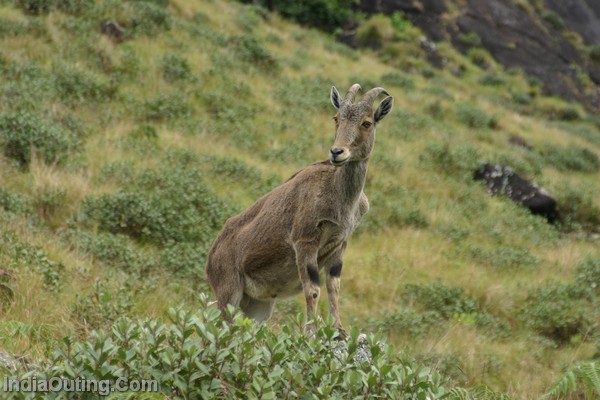
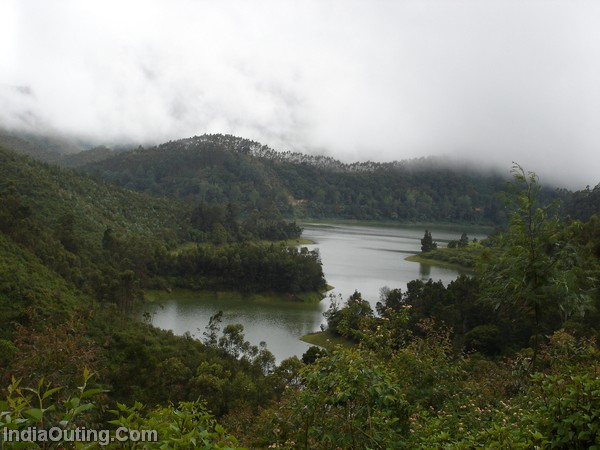
- Salim Ali (Thattekkad) Bird Sanctuary, There are woodpeckers, Malabar gray hornbills, Ceylon frogmouths, parakeets, and rose-billed rollers. This sanctuary is located 20km from Kothamangalam on the road between Ernakulam and Munnar. There are basic and mid-range hotels in Kothamangalam and an Inspection Bungalow in Boothathankettu. You can take a boat cruise from Boothathankettu to Thattekkad. Admission Foreigners/Indian Rs 40/10.
- Marayoor – Around 40km from Munnar. It is the only place in Kerala with natural growth of sandalwood trees, natural caves with murals, and relics from Later Stone Age civilisation. There is a sandalwood factory of the Forest Department of Kerala and a children’s park extending across one hectare of land under the canopy of a single Banyan tree, all of which attract tourists in large numbers.
- Kolukkumalai Tea Estate – At a height of about 7130 ft, this orthodox tea factory lays claim to being one of the highest in the world. The view of the Western Ghats is absolutely enchanting.
- Blossom Garden – Houses many different varities of flowers. Tourist will definitely take away good memories from this place.
- Water falls – Check out several natural waterfalls on the way to Munnar. These waterfall carry fresh rain water. They provide an excellent place for all tourists to have photo shootout.
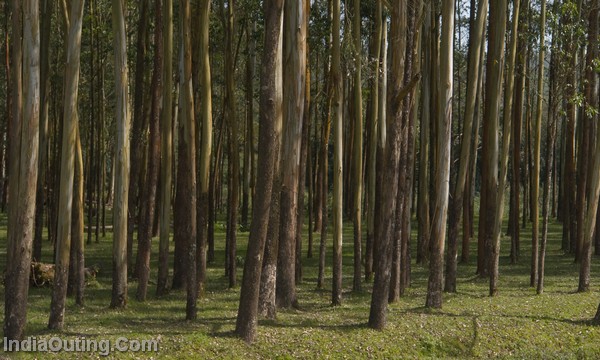
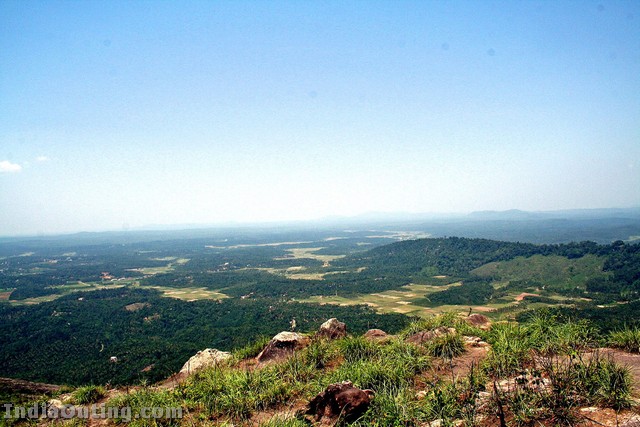

No comments:
Post a Comment